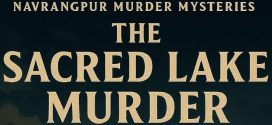Though it is mainly the story of Gogol, as we went through in Part 1, ‘The Namesake” also vividly captures the journey of his parents through their lives.
Ashoke, a brilliant young engineer, come to the land of dreams to make his contribution to the research work done by the best minds in the world. We trace him from a young, enthusiastic next-door lad to someone who survives a catastrophe and accepts the new life as a miracle. He decides to expand his limits and see the world before it is too late. And Ashima, a shy, young girl, who marries like her mothers and grandmothers have done before her. But, in their true tradition, she is willing to brave a long journey alone on a plane that will carry her to a strange land. She comes and becomes the true partner of her husband.
She lives with him, trying to re-create the joys and comfort of an Indian home for a hard-working man. As all immigrants do, scouring the supermarkets for ingredients that would make the food feel like home, decorating with Indian articles, hanging on to a few Bangla magazines and books, and rejoicing in a prospect of receiving a letter. A letter that will bring with it the writings from beloved families, feeling that a familiar hand passed over the paper and created those magical words, the picture of a father writing to the daughter while the mother peeps over his shoulder and supplies the words. As fast as internet is and as handy as e-mails are, they could hardly match with her feelings when she receives a letter.
Together this two strangers grow into a family of four, bonded by a thread of love that need no expressing. Not a single word of love is spoken or a touch exchanged in front of the world and yet, in this foreign land they are closest to each other’s souls. Together they share the happiness of seeing their children born, and together they spent nights of mourning when a telephone call announces loss of a parent. They regret the time they could not spend with their parents and that’s why they struggle to understand their own children’s need of distance when they grow up.
Gogol and Sonia are born of Indian parents and grown in America. Their entire lives are torn in two. Their identities are more American than Indian, and yet some things run too deep to be unaltered by outer influences. They do not understand their parents’ need to socialise with other Bengali families. They do not understand why they still cling to their Indian ways. They do not understand the pain of being torn from the roots by choice and the guilt and the regret associated with it.
They fail to realise that their parents who appear to be unchanging have actually much more adaptability than their children. Ashoke and Ashima might seek friendship with only Bengalis, but they have adopted USA as their home. Ashoke has a successful career and Ashima has learnt to live and be happy here. They both have the core strength which helps them convert any place into a comfortable home. Although they do not understand it completely, they do accept their children’s choices in life. These are the same strengths that have helped generations of Indians to migrate all over the world and wherever they have gone, they have taken a little part of India with themselves. The life inside home has always remained as closest to the Indian life as they knew it.
The story is so simply told, and yet it touches upon such a wonderful range of emotions. There are not many characters here, but they are all real, very real. They breathe and they talk and they feel and you recognise them.
No wonder Mira Nair turned it into such a beautiful film in 2006, where Irrfan Khan played Ashoke and Tabu played Ashima perfectly. The film is a must watch in itself as Kal Pen struggled on as Gogol.
But, it is the book that will make you ask a few questions, and probably find a few answers as well…………….Too good to read…………….
 ThinkerViews – Views And Reviews Personal views and reviews for books, magazines, tv serials, movies, websites, technical stuff and more.
ThinkerViews – Views And Reviews Personal views and reviews for books, magazines, tv serials, movies, websites, technical stuff and more.



